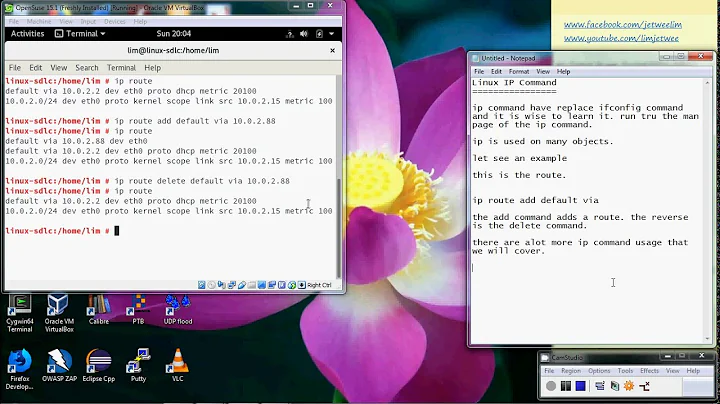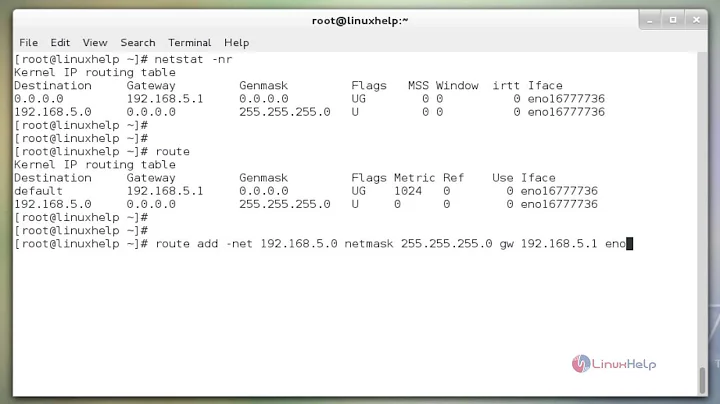Linux adds the wrong default route
Solution 1
The "default" routes are set based on the GATEWAY lines in your ifcfg-<interface> files. As Dom mentioned in his comment, if you remove the incorrect GATEWAY line, your routing table will be as you expect.
Solution 2
There's a difference between GW and Default GW. Based on your config, it looks like you want both interfaces to be able to access external networks. You could remove the GATEWAY line as has been recommended but doing so will prevent bond1 from any external communication.
As soon as you go multihomed I find it's a good idea to use policy based routing. Also known as split-access routing. It's a good habit to get into and is required when you want to put multiple interfaces on the same subnet.
For your case specifically I would:
- Edit
/etc/iproute2/rt_tables - At the bottom of the file add:
100 bond0tbl101 bond1tbl
Now you have defined your internal tables called bond0tbl and bond1tbl respectively. Now you need to create the rules for these tables
- Open/Create
/etc/sysconfig/network-scripts/rule-bond0 - Add the following:
from 192.168.10.11 table bond0tbl - Open/Create
/etc/sysconfig/network-scripts/rule-bond1 - Add the following:
from 192.168.0.15 table bond1tbl
Now that you've defined the rules, it's time to define the routes.
- Open/Create
/etc/sysconfig/network-scripts/route-bond0 - Add the following:
- default via 192.168.10.1 dev bond0 table bond0tbl
- 192.168.10.0/24 via 192.168.10.11 dev bond0 table bond0tbl
- 192.168.10.0/24 via 192.168.10.11 dev bond0 table main
- Open/Create
/etc/sysconfig/network-scripts/rule-bond1 - Add the following:
- default via 192.168.0.254 dev bond1 table bond1tbl
- 192.168.0.0/24 via 192.168.0.15 dev bond1 table bond1tbl
- 192.168.0.0/24 via 192.168.0.15 dev bond1 table main
Last I would remove the GATEWAY line from BOTH ifcfg-devX files and add it to /etc/syconfig/network.
It's easy to get confused about the GW that a specific interface should use for routing and the Default GW that EVERYONE should use...in the event that the desired route doesn't exist. Setting it in /etc/sysconfig/network has always felt more "global" to me.
When your ducks are all in a row you service network restart or ifup/ifdown or reboot to get everything created. To see if it worked you can do:
ip route show table bond0tblip route show table bond1tblip route show table mainip rule show
To recap,
- Define tables with a meaningful naming convention
- Define rules to force traffic for a specific IP to a specific interface
- Define the default route for that interface/IP
- Define the route to be added to the newly created table
- Define the route to be added to the "main" table.
- Let the ifup/service network restart/reboot do the work
Related videos on Youtube
Zoon
Updated on September 18, 2022Comments
-
Zoon almost 2 years
For some reason my Centos 5.9 Linux 2.6.18 x86_64 wants me to have two default routes.
Whenever I reboot the server, my routing table looks like this:
[root@server1 ~]# route -n Kernel IP routing table Destination Gateway Genmask Flags Metric Ref Use Iface 255.255.255.255 0.0.0.0 255.255.255.255 UH 0 0 0 bond0 192.168.0.0 0.0.0.0 255.255.255.0 U 0 0 0 bond1 192.168.10.0 0.0.0.0 255.255.255.0 U 0 0 0 bond0 169.254.0.0 0.0.0.0 255.255.0.0 U 0 0 0 bond1 0.0.0.0 192.168.10.1 0.0.0.0 UG 0 0 0 bond0 0.0.0.0 192.168.0.254 0.0.0.0 UG 0 0 0 bond1bond1 is a local network, so having a last default route pointing to this network makes all internet requests fail.
It is easily fixed by executing
route del default gw 192.168.0.254and I could possibly add that command to some startup script. I would however like to understand what's going on and get to the root of the problem.I hope anyone can tell me, why this happens. My research confirm that there should always be only one default gateway, but I can find no answer to why there would automatically be two of them.
Here is some config files:
[root@server1 ~]# cat /etc/sysconfig/network NETWORKING=yes NETWORKING_IPV6=no HOSTNAME=myhostname.com [root@server1 ~]# cat /etc/sysconfig/network-scripts/ifcfg-bond0 DEVICE=bond0 IPADDR=192.168.10.11 NETMASK=255.255.255.0 NETWORK=192.168.10.0 BROADCAST=192.168.10.255 GATEWAY=192.168.10.1 ONBOOT=yes BOOTPROTO=none USERCTL=no [root@server1 ~]# cat /etc/sysconfig/network-scripts/ifcfg-bond1 DEVICE=bond1 IPADDR=192.168.0.15 NETMASK=255.255.255.0 NETWORK=192.168.0.0 BROADCAST=192.168.0.255 GATEWAY=192.168.0.254 ONBOOT=yes BOOTPROTO=none USERCTL=noI understand that swapping bond0 and bond1 would make the two default routes switch place as well, effectively giving me internet access on boot. But I still think it's not the good solution.
Around the internet people are talking about files at
/etc/sysconfig/network-scripts/route-X, I don't have any of those though.Thanks for your time.
-
Dom about 10 yearsRemove the line GATEWAY=192.168.0.254 from your /etc/sysconfig/network-scripts/ifcfg-bond1 file ?
-
-
Tilman Schmidt almost 9 yearsThis answer is not only late, arriving more than a year after the question has been answered correctly and comprehensively, but also inferior to the answers already given. Please consider retracting it.




